The inside space of the project can be divided into six contiguous rooms, each one dedicated to a specific activity, which reaches from the place of contact between the pavilion and the hospital tower to the garden terrace. The spaces are materially divided by glass planes, which allows the separation to be visually insistent.
The glass, along with the maple plywood, the vegetation, and the way natural lighting is managed, contribute to building a calm and welcoming atmosphere.
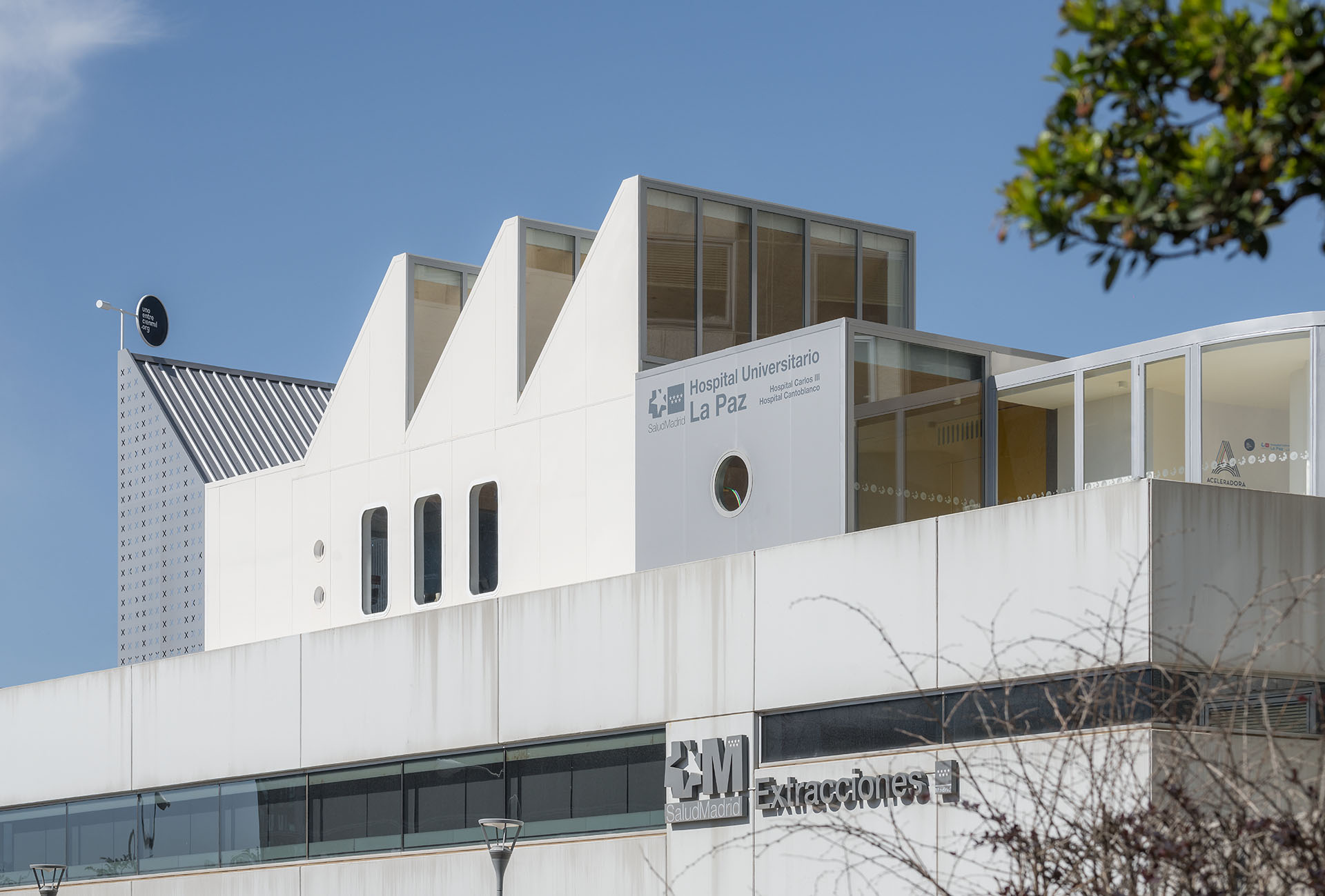
La Paz Accelerator by Murado & Elvira Arquitectos. Photograph by Imagen Subliminal.
Description of project by Murado & Elvira Arquitectos
A therapeutic space
The Madrid Peace Accelerator is the first of a series of industrialized pavilions that will be implemented in various Spanish hospitals with an unprecedented purpose in our healthcare landscape. Part of a research project by the unoentrecienmil foundation—promoter of the project—whose results have shown that physical exercise can help accelerate the cure of childhood cancer by 17%, increase the chances of survival, mitigate the side effects of treatment and improve their self-esteem and quality of life. In the Accelerator, boys and girls of different ages with this disease will be able to exercise as part of a non-pharmacological therapeutic program, and thus positively influence their recovery. Patients' physical activity is recorded using devices that collect data to obtain scientific evidence that will improve their treatment.
Transdisciplinary co-production
The knowledge production process that culminates in this project has involved numerous agents: researchers, medical personnel, anthropologists, graphic designers, programmers, builders and architects. The final result is indebted to all of them.
It began with the elaboration of the sequence of actions and experiences necessary for all those involved in the hospital, from the patients' stay on the ward to the integration of physical exercise in hospital treatment and the construction of an optimal experience for everyone. To do this, from Innuba, a team of anthropologists developed a series of interviews with patients, their families and health technicians and researchers. From this study, the map was prepared that would describe all the actions necessary to carry out the project along this path by the agents involved, and the development of the architectural project that would accommodate them began.
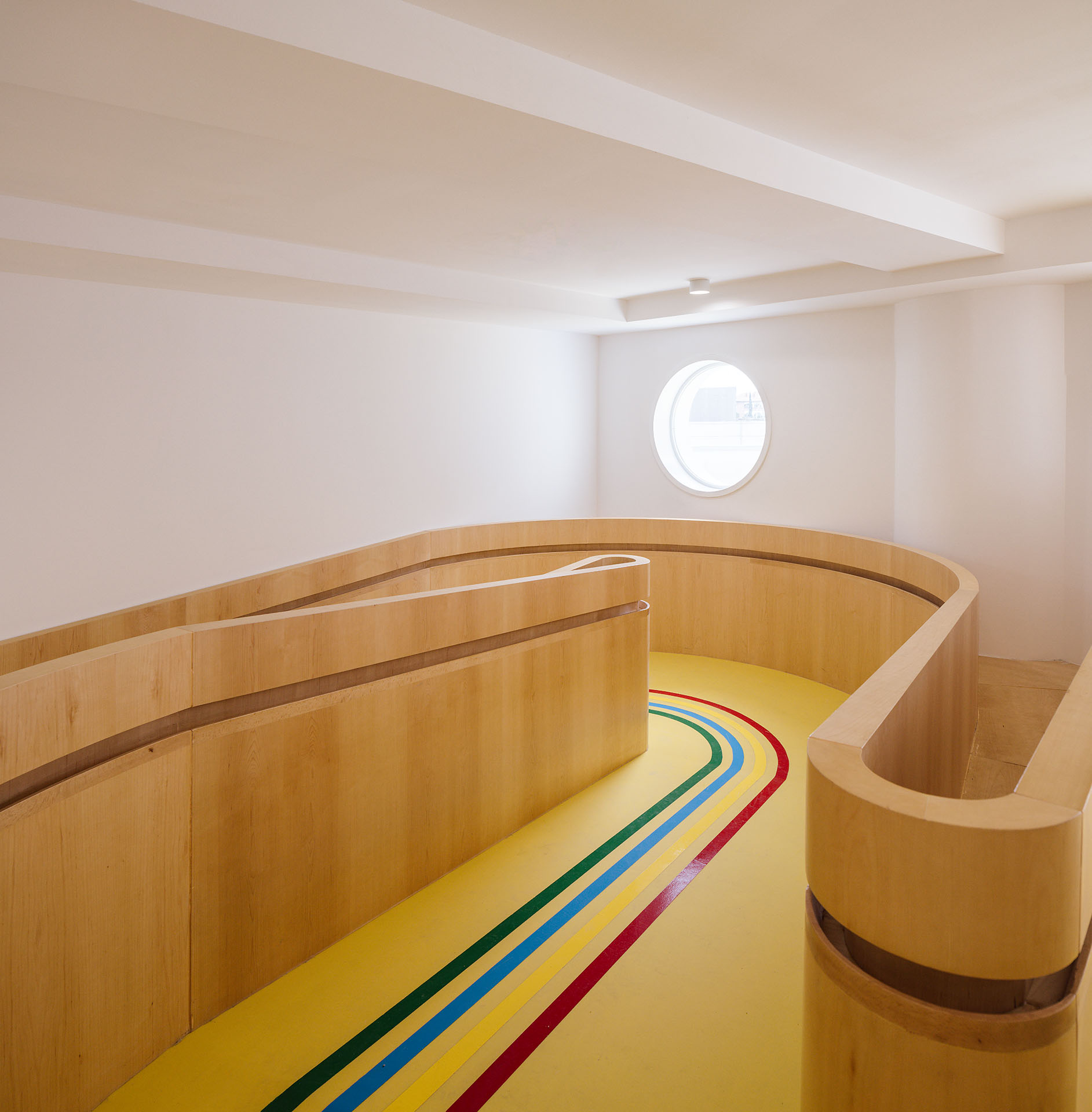
La Paz Accelerator by Murado & Elvira Arquitectos. Photograph by Imagen Subliminal.
Go out from the hospital
The Accelerator is placed on a roof of the La Paz Hospital, next to the main entrance and connected to the maternal and child tower. It is an exterior space but at the same time also a new interior that incorporates techniques and imaginaries favorable to recovery.
Patients can leave for a moment the rigid temporal and spatial protocols and the monotony of the main building, to enter a place with an alternative spatial and material organization.
Six episodes
The Accelerator is a sequence of contiguous spaces. Each of them is dedicated to a specific activity and has slightly different material and lighting qualities. They all make up a unique and visually accessible space. From the point of contact between the pavilion and the hospital tower, to the garden terrace, the sequence of episodes of the pavilion constitutes a carefully coordinated experience adapted to the needs of all who use it, from the patients to their families and the staff who serve them.
The space connecting the Accelerator with the hospital, on the second floor of the tower, is a wooden ramp that zigzags from the perimeter corridor to the threshold on the façade of the tower. The emergence of the curved maple wood volumes inside the hospital is an introduction to the materiality that the visitor will find in the rest of the pavilion's interiors and constitutes a clear invitation to enter. At the end of the first section of the ramp, an oculus pierces the façade to offer a first look inside the pavilion, on the other side of the white wall.
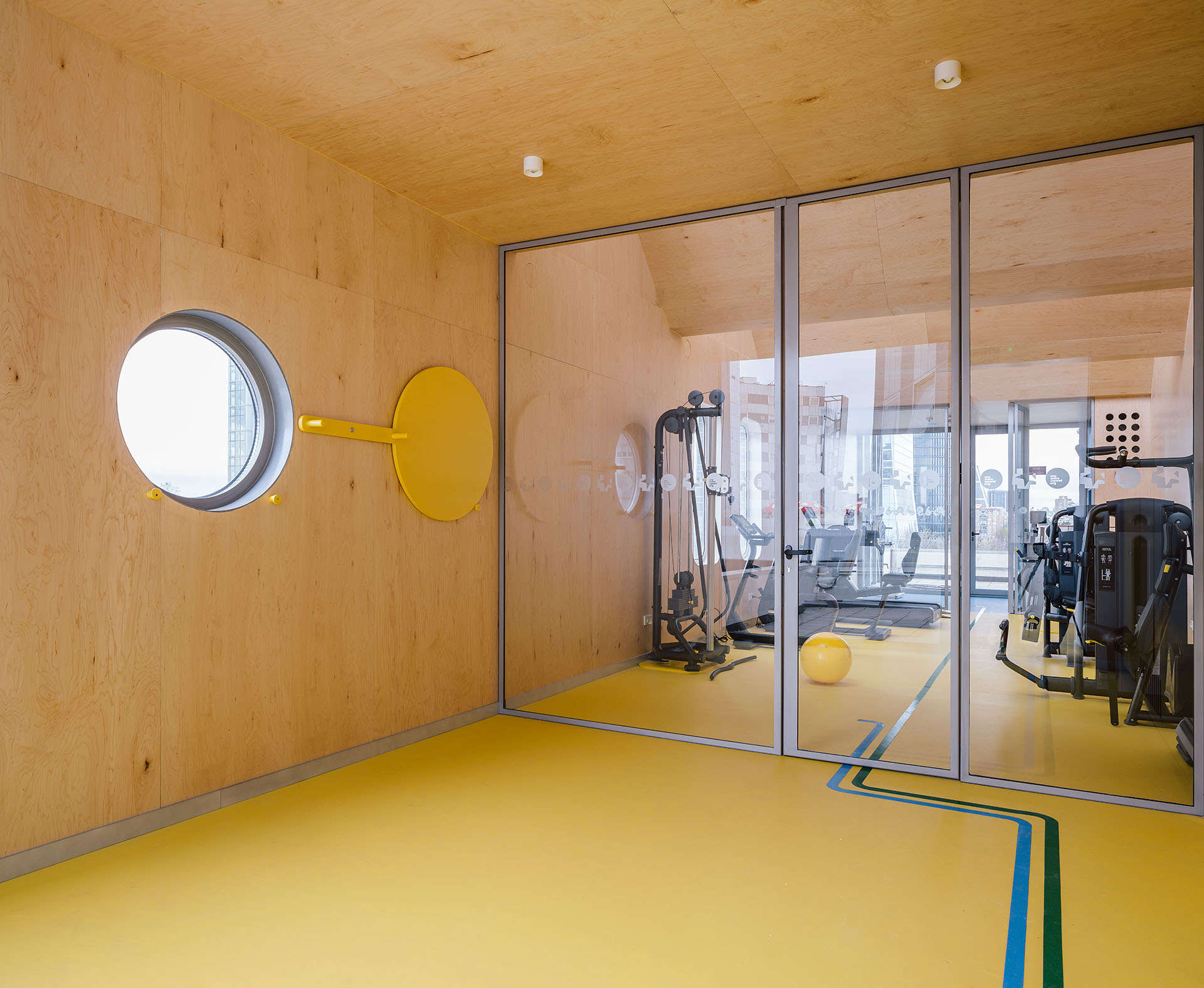
La Paz Accelerator by Murado & Elvira Arquitectos. Photograph by Imagen Subliminal.
The ramp leads to a waiting room, the first space outside the tower, which allows patients and their companions to sit on a semicircular bench from which they can see the hospital's access plaza and exercise spaces. Its curved geometry resolves the contact between the ramp and the main pavilion.
Physical exercise is carried out in the following two spaces. The first, just after the waiting room, is dedicated to informal exercise and is accessible at any time of the day.
In this place, the Accelerator also offers a solution for those patients who cannot move inside. A large rolling piece of furniture, which contains the material necessary for the exercises, is unhooked from the closet to be moved to the room.
The second room, larger in size and illuminated with three skylights facing north, contains the machines for supervised exercise.
Next, the laboratory contains the machinery necessary to record the progress of
the investigation. A fold-out stretcher allows patients to be examined.
The last space in this sequence is a covered outdoor terrace, facing south, which protects the laboratory from the incidence of the sun in summer, and which contains a small garden of native species.
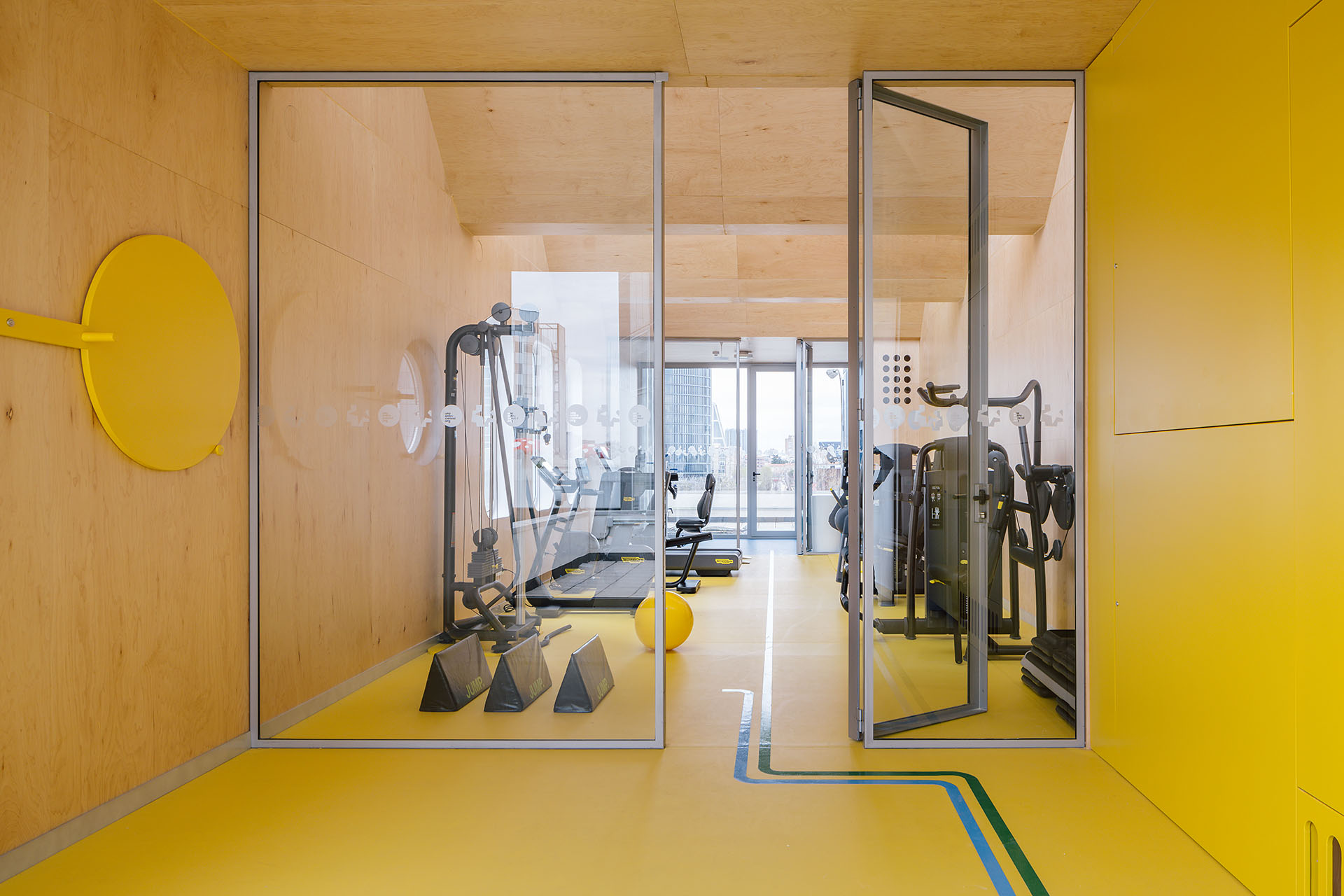
La Paz Accelerator by Murado & Elvira Arquitectos. Photograph by Imagen Subliminal.
Natural atmosphere
All these areas, which constitute a single area separated by glass partitions, are finished with maple plywood. The use of this material, the vegetation and the way in which natural lighting is administered contribute to building an atmosphere of calm and welcome, conducive to the recovery of patients.
In recent decades, a series of empirical studies have investigated how the use of natural components—just as happens in outdoor nature experiences—contributes to our well-being. From a biophilic and evolutionary point of view, humans have developed an innate sensitivity to coexistence with other living beings, and, consequently, to natural materials such as wood. Almost everyone agrees that wood is beautiful, and is attracted to it. Wood is a living material, which changes over time and with which we develop immediate bonds. Another important element for well-being is vegetation, introduced in the outdoor module and visible from the exercise spaces.
Construction system
The future need to implement these research spaces in different hospitals gave rise to an understanding of the project as a combinatorial system. Starting from a catalog of dimensional units, interior and exterior finishes, a series of light control devices and other “plug-ins”, each project will be considered as part of a common family of solutions, adapted in each case. to the needs of the location.
In accordance with this approach, industrialized and prefabricated construction systems were adopted. With a metal structure, sandwich panel and wooden plywood boards inside, the different modules were built in a warehouse over two months. They were then transported in modules in three trucks. After a two-day trip, the modules arrived at the La Paz hospital, where they were assembled in ten hours.
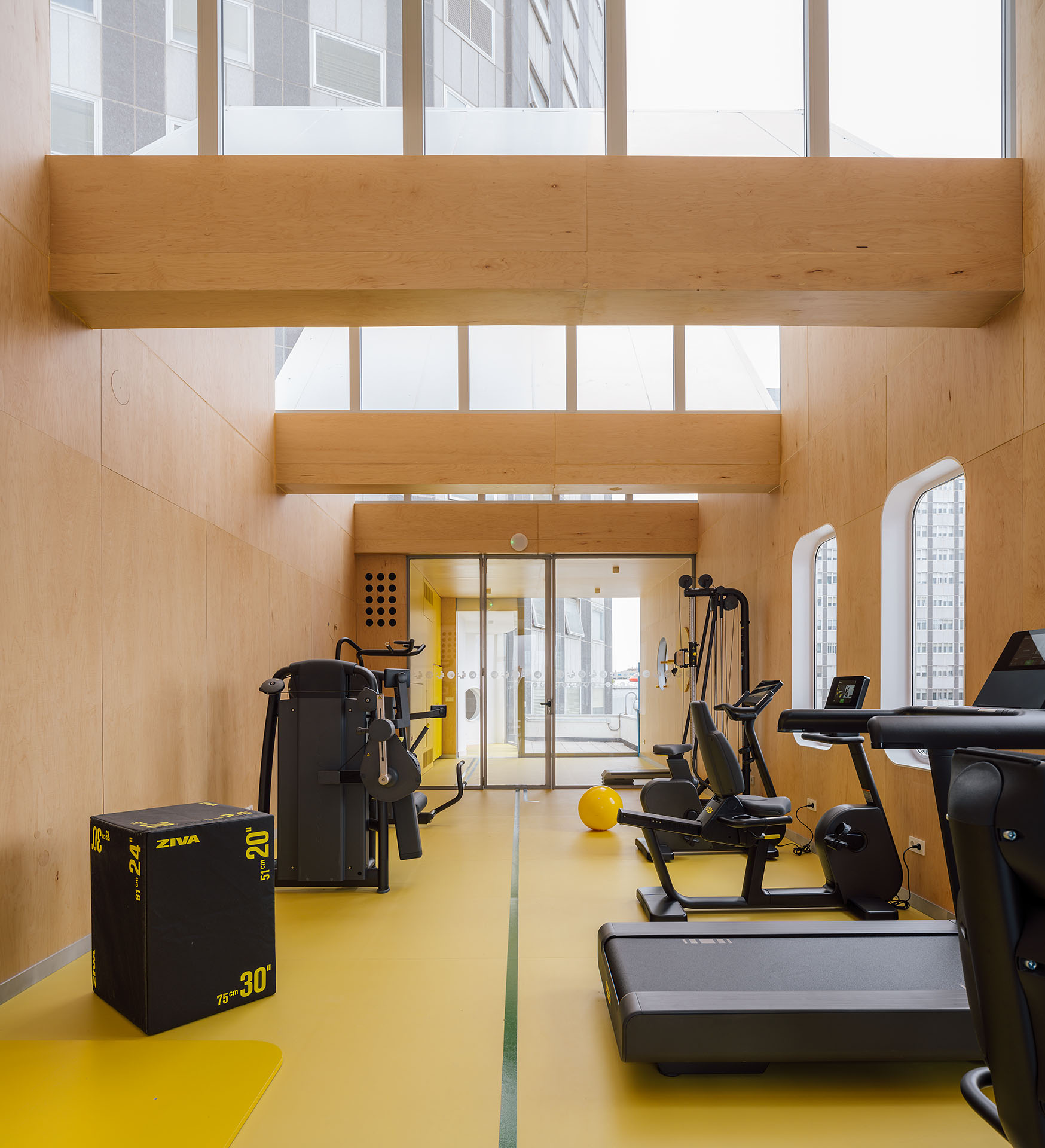
La Paz Accelerator by Murado & Elvira Arquitectos. Photograph by Imagen Subliminal.
In plan, the pavilion solves the storage needs through a wall equipped on the west side. Furthermore, this façade is thicker to contain all the necessary facilities. The air conditioning systems emerge inside through perforations in the wooden boards.
The maximum autonomy of the pavilion has been pursued, which contains the entire body of facilities inside, and is only connected to the hospital's existing water, electricity and medicinal gases network. The section of the equipped garden wall groups the large air conditioning machines.
All the windows on the façade facing the hospital plaza are fixed. Cross ventilation is resolved through blind oculi that, when opened on the two long facades, guarantee adequate air renewal.
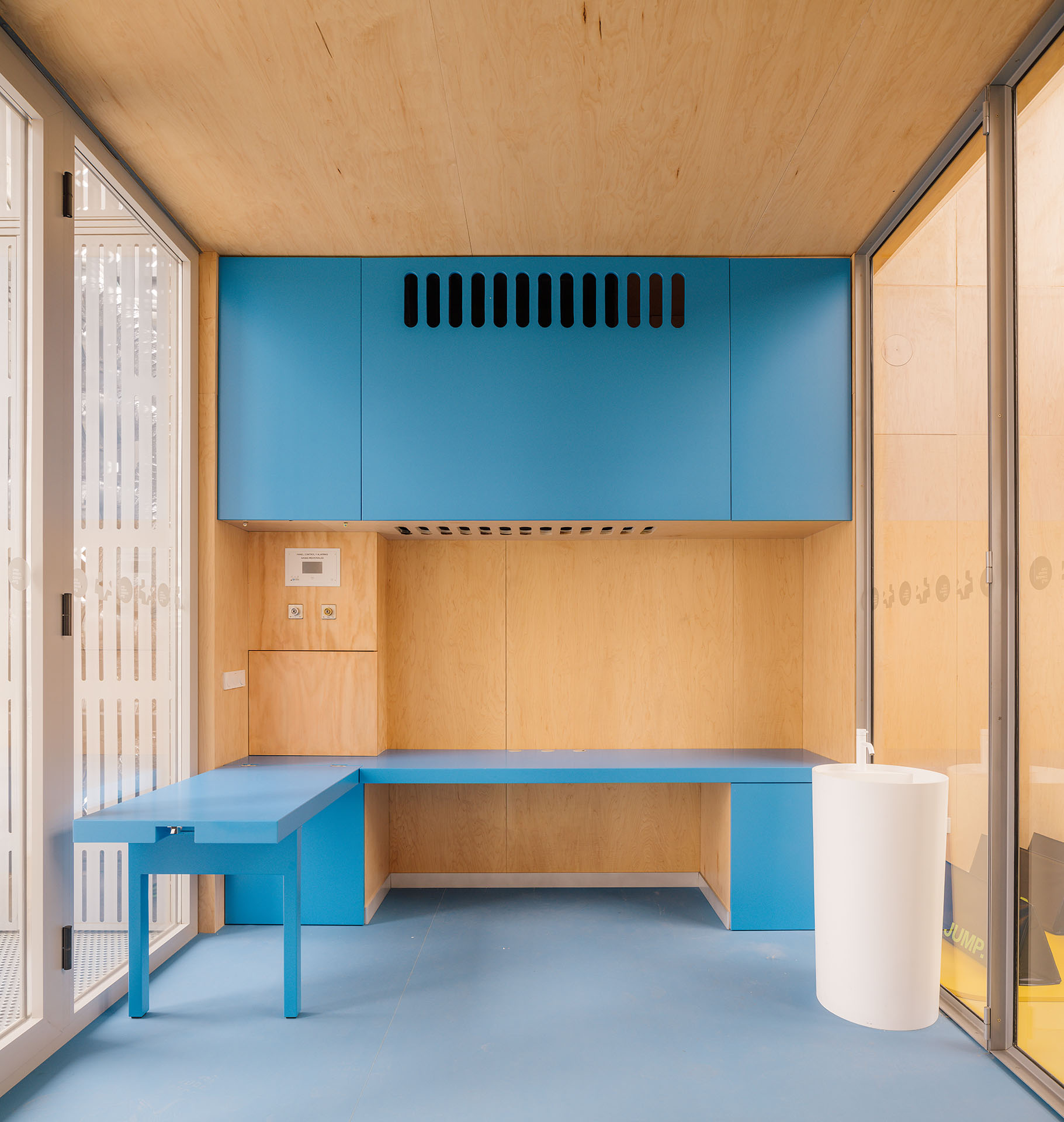
La Paz Accelerator by Murado & Elvira Arquitectos. Photograph by Imagen Subliminal.
A pet
If the interior of the Accelerator is designed to reinforce the therapeutic will of the research program as much as possible, the exterior aims to communicate globally with those who visit the area. The shape of the project makes explicit its combinatorial nature, and conveys a certain idea of lightness and ease. On the other hand, its geometry deliberately contrasts with its immediate surroundings and denotes its desire to distinguish itself from the hospital and office fabric that surrounds it. Finally, the pavilion includes two of the “plug-ins” from the general catalogue: a weather vane and some colored bands on the façade.
These super-graphics, which add a two-dimensional and communicative character to the architecture, are integrated into its formative principles, reduce gravity and provide a domestic and accessible dimension to the project.


























































